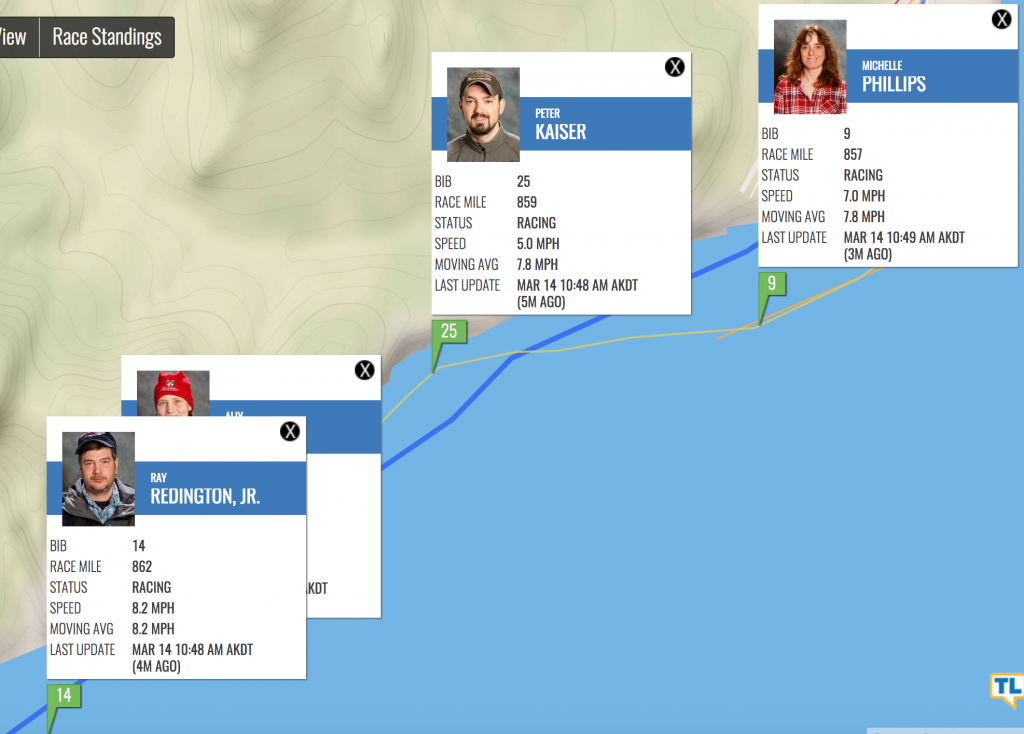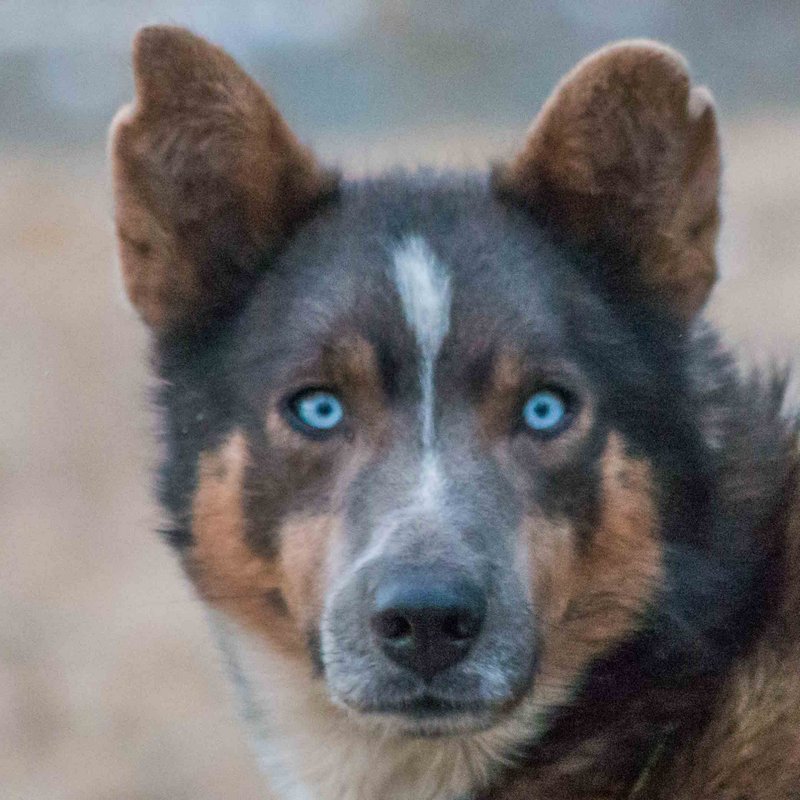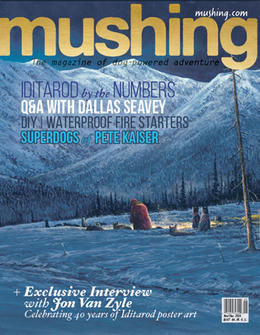
Afternoon in Shaktoolik.
After a long run, a good break in Shaktoolik is now coming to a close. Ray Redington and Aliy Zirkle took about 3hours 30 minutes, while Pete gave the Team a full 4 hours.
In the back of his mind has to be the 2015 Race, where in a blizzard they lost the trail near Shaktoolik, the Team’s confidence was impacted and once in Koyuk, Pete had no recourse but to just wait it out for many hours as Team after Team passed him. It was a brutal experience for both Pete and the Team, and the Finish was a huge accomplishment. The Team was so impacted that after White Mountain, in another blizzard, fellow musher Kelly Maxiner led Pete and the Team through and helped them make it to the Finish line. That 2015 Race, I think, was easily the toughest mentally.
Read “We can’t go anywhere.” and “Exciting Battle to the Finish” (What the ADN article missed was that when both mushers got to the ledge, Kelly offered to Pete to lead him through)
Having that experience tempers a bit what you might want to do, and a few extra minutes definitely won’t hurt a bit.
The trail ahead is another annual mental battle. Once the Teams leave the beach and head over to the frozen ice pack, Koyuk is a mirage in the distance that seems larger that it truly is. Hours go by with it hanging there and a musher just knows they must be almost there. But it isn’t and it is just miles and miles of miles.
It’s a perfect time to do it though as there will be a gentle breeze that will keep the dogs cool and the views should be very dramatic.
Expect a 5 hour run into Koyuk, so Pete should arrive just about dinner time!
From Iditarod .com
There is only one thing to say about this leg—bleak, flat, and deadly monotonous. Locals say the actual distance is under 50 miles, but it always seems like a hundred. There is not so much as a shrub on this stretch, most of which is over the sea ice of Norton Bay. Plan on five to nine hours for the crossing, more if the wind is blowing hard.
The trail runs almost due north from Shaktoolik, overland across very low rolling terrain for about nine miles to Reindeer Cove, then across the ice for five miles to Island Point, then back onto the ice immediately for the last 45 miles to Koyuk. There are no hills.
The trail is also the main snowmachine trail to Koyuk and is well used. However, winds can wipe it smooth in hours. It is well marked with Iditarod trail stakes, spruce boughs, or both. The trail can range from a groomed speedway to rough ice to drifted snow to glare ice. The wind is usually blowing, and almost always right in your face. Days with less than 20 or 30 mph breezes are uncommon.
On a historical note, the original Iditarod Trail didn’t go to Koyuk. It went by Shaktoolik and continued south of Elim to Golovin, skirting much closer to the open water than the race trail does today. During the 1925 Serum Run, Leonhard Seppala drove his dogs (behind his leader, Togo) nonstop from Nome toward Unalakleet and Kaltag, thinking he was going to pick up the serum somewhere on the Yukon River.
He unexpectedly met Henry Ivanoff carrying the vaccine on the ice just offshore of Shaktoolik. Seppala loaded up the serum and immediately started back without even resting his dogs. He went almost directly across the mouth of Norton Bay to Golovin, where he passed the life-saving package to Gunnar Kaasen and his legendary leader, Balto (who, by the way, actually belonged to Seppala).
Seppala’s route from Shaktoolik to Golovin was extremely dangerous and difficult, made worse by high winds and 40-below temperatures and the ever- present threat of open water and moving ice. Seppala was already widely regarded as the territory’s best musher, and his part of the serum run was certainly the hardest of any of the 20 mushers who participated. Togo worked so hard on the Serum Run he injured himself and never raced again.
Sounds like fun- I jest! Go Team Kaiser!

































